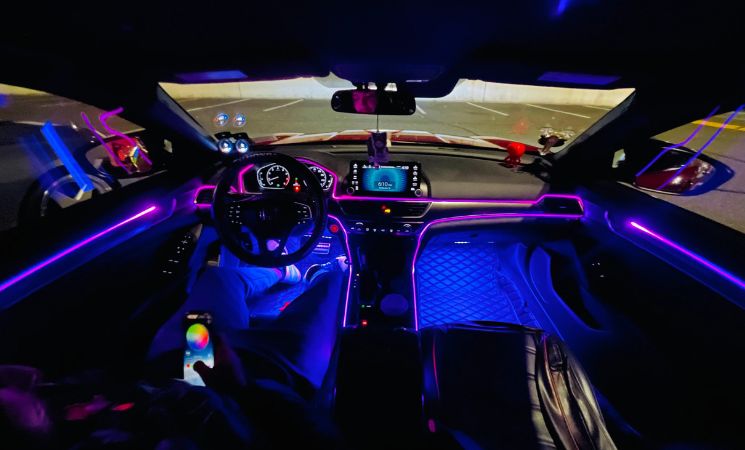The quality of home lighting can significantly impact the overall atmosphere and aesthetic of an interior space. Among the various types of lighting, ambient lights play a pivotal role in shaping the mood and functionality of our homes. This form of illumination is fundamental to interior design and can transform a room into a tranquil, welcoming space. In this article, we will explore the various aspects of ambient lighting and how it can enhance the comfort and appeal of your home.
Understanding Ambient Lighting
Ambient lighting, often referred to as general lighting, serves as the primary source of light in a space. It is designed to emit a comfortable level of brightness without glare, providing uniform illumination that sets the tone of a room. Unlike task or accent lighting, which are used for specific purposes such as reading or highlighting artwork, ambient lights are intended to produce a consistent layer of lighting across the entire area.
The Importance of Lighting in Interior Design
Lighting is a critical element in interior design. It can make or break the visual comfort of a living space. The colour temperature of a light source, measured in Kelvins, influences the warmth or coolness of the illumination. Soft, warm lights tend to create a cosy and inviting atmosphere, often used in living rooms and bedrooms. Conversely, cooler lights are typically employed in bathrooms and kitchens where clarity and brightness are paramount.
Choosing the Right Ambient Lights
When selecting ambient lights for your home, it is essential to consider both the functional and aesthetic components. The size of the room, ceiling height, and colour palette all influence the type of ambient lighting that will work best. LED options have become increasingly popular due to their energy efficiency and long lifespan, making them a sustainable and cost-effective choice.
For smaller rooms, a central ceiling fixture or recessed lights might suffice, while larger spaces may require multiple light sources to avoid shadows and dark corners. Dimming capabilities are also an excellent feature, allowing for adjustable brightness levels to match different times of day and activities.
The Role of Natural Light
Natural light is the most desirable form of ambient light during daytime hours. Maximising the use of natural light can not only improve the mood and aesthetic of a room but also reduce electricity consumption. Large windows, strategically placed mirrors, and transparent window treatments can enhance the flow of natural light and serve as a beautiful complement to artificial ambient lights.
Integrating Technology with Ambient Lighting
Technological advancements have introduced smart lighting systems into the realm of ambient lighting. These systems offer unparalleled control over home lighting schemes. Users can adjust brightness, set schedules, and even change the colour of the lights through smartphone apps or voice commands, enabling a customisable lighting experience. Whether aiming for a serene, relaxed vibe or a lively, dynamic atmosphere, technological integration has made it easier than ever to achieve the desired ambience.
Creating Layered Lighting Schemes
While ambient lighting provides the foundational layer of light, incorporating task and accent lighting can create a layered effect that adds depth and character to a room. For instance, pendant lights over a kitchen counter provide targeted illumination for food preparation, while wall sconces or floor lamps can deliver softer light that enhances textures and subtleties in a living space.
Impact of Ambient Lighting on Wellbeing
The lighting in our homes can have a profound effect on our mental and emotional wellbeing. Ambient lights that mimic the natural progression of daylight can help regulate our circadian rhythms, leading to better sleep patterns and overall mood. The use of dimmers and warm coloured bulbs in the evening can signal to our bodies that it’s time to wind down, potentially improving the quality of our rest.
Home Illumination for Energy Efficiency
Cutting down on energy consumption is becoming increasingly important in households around the globe. Selecting energy-efficient bulbs, such as LEDs or CFLs, for your ambient lights can substantially reduce your energy bills and environmental footprint. Furthermore, utilising natural light during the day and embracing lighting control systems can help you better manage energy use without compromising on comfort or style.
Conclusion
Ambient lights are more than just a practical necessity; they are a transformative element that can dictate the atmosphere and aesthetic of a home. The thoughtful integration of ambient lighting into your living spaces can dramatically enhance the ambience and create an inviting environment. With a blend of natural light, energy-efficient solutions, and smart technology, the opportunities for customisation and personalisation are endless. By paying attention to the nuances of ambient lighting, homeowners can achieve a harmonious balance between beauty, functionality, and wellbeing in their personal sanctuaries.
Final Thoughts on Ambient Lights
In conclusion, the strategic use of ambient lights has the power to transform a house into a home. They foster an environment where comfort meets design, resulting in spaces that are functional, aesthetically pleasing, and conducive to good health. Whether you’re building a new home or refurbishing an existing one, considering the impact of ambient lighting on your home’s atmosphere is crucial. It’s the subtleties in lighting that can create profound changes in how we perceive and enjoy our personal spaces.














